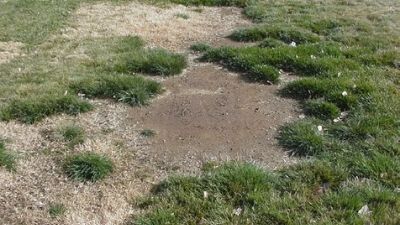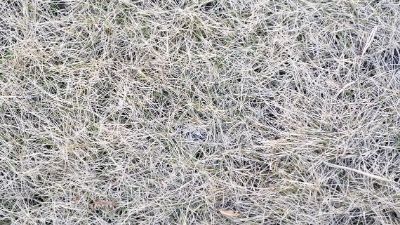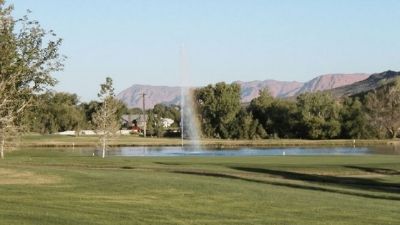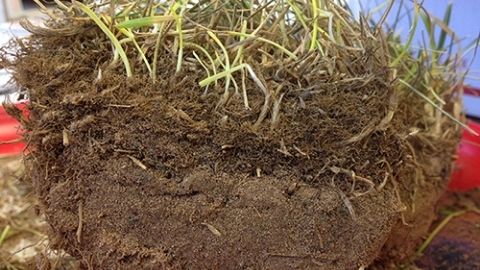Over Hill, Over Dale: Earthworms in the Lawn
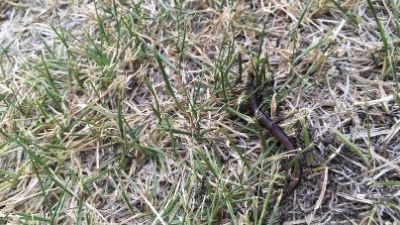
Are you concerned about a bumpy, rough area in your lawn? Does a close inspection of your lawn reveal a miniature replica of the Wasatch Mountain
Range? Such areas can be annoying, hard to mow, and even dangerous for anyone walking or running across them. What causes these bumps? And, more importantly, how do you get rid of them?
There can be several reasons for bumpy lawn conditions. Sometimes the repeated freezing and thawing conditions of winter and early spring move
the soil up and down. In other cases, older and more established lawns become rough and uneven over time as the turfgrass gradually thins out. Thinning lawns can be caused by shade, insect damage, and poor maintenance practices. Re-establishing a healthy, thick turf will help improve this situation.
Another possible cause of bumpy and rough lawns, and the subject of this fact sheet, is the presence of earthworms. In such cases, it is the movement of earthworms in the soil and the castings that they leave behind on the soil surface that cause the roughness. Castings are the result of the ingestion and excretion of soil and plant litter by the worms. You may also notice that the activity of earthworms is greatest in the spring and fall when soil moisture conditions and temperatures are conducive to their activity.
The problem of earthworm “damage” to turfgrass areas is a complex one. On one hand, a population of earthworms is a good indicator of a very healthy turfgrass system. On the other hand, the bumps that sometimes occur as a result of earthworm activity can make it difficult to mow your lawn without scalping the bumpy areas. These spots may also be a safety concern if you have trouble walking over them. In a lawn, earthworms work as natural aerators. They turn over the soil in a steady and methodical manner without any real disruption to the turfgrass. Their holes improve the movement of water and nutrients into the soil and make them more available to the lawn. In addition, they are some of the best decomposer organisms that exist in the soil. They decompose thatch and, by doing so, help recycle nutrients and make them available to the grass again. Generally speaking, it is desirable to have a healthy population of earthworms in your lawn.
If earthworm activities become problematic for you, however, there are a few things that you can do. The best techniques to alleviate earthworm “damage” include basic, good lawn care practices. These practices are detailed in the USU Extension Bulletin “Basic Lawn Care” (HG517). Good lawn care practices include the following: a basic fertilization schedule, aeration of the lawn, and over-seeding to fill in thin patches. When over-seeding, remember that you will need to keep the soil surface evenly moist to encourage germination. As the lawn becomes healthier and thicker, the surface will be less bumpy because of the cushion that healthy turfgrass provides. A light roller may also be helpful in improving the bumpiness of a lawn, but avoid the use of heavy rollers that can compact the soil, since
this can cause other problems.
Another basic lawn care practice that can help control the bumpiness caused by earthworms is proper irrigation. Generally, earthworms only become a nuisance when the soil is extremely moist and they must surface for air. This is why they are often seen in the spring as the soil thaws and moisture is high. Irrigating less frequently and deeply during the growing season will keep earthworm populations deeper in the soil profile so that they are not creating bumps and castings on the surface. On the other hand, frequent and shallow irrigations can encourage earthworms to stay near the surface.
It is also important to keep in mind that earthworm populations are harmed by the use of certain lawn care pesticides and there is not any pesticide product labeled for their control. If you use these products, understand that harm may be done to earthworm populations.
Published May 2012
Utah State University Extension
Peer-reviewed fact sheet
Download PDF
Authors
Kelly Kopp and Mark Nelson
Related Research




